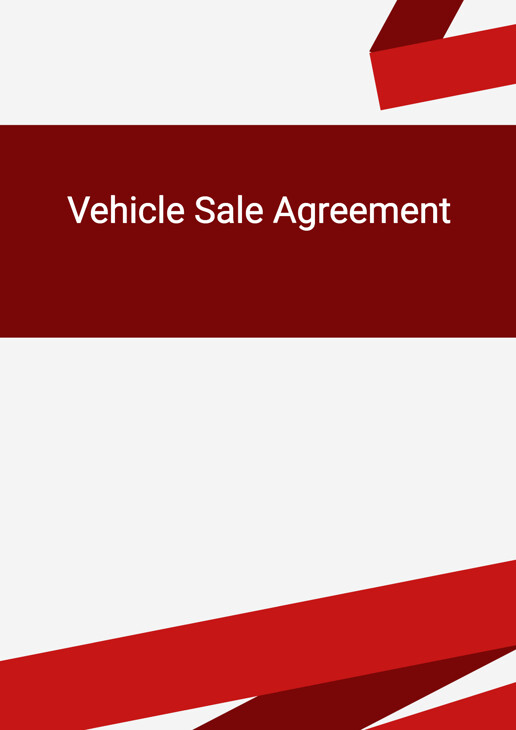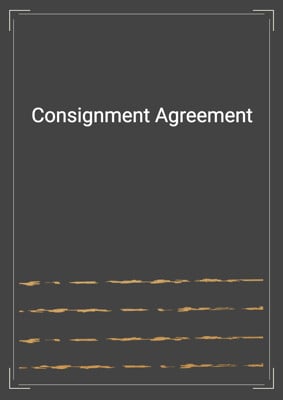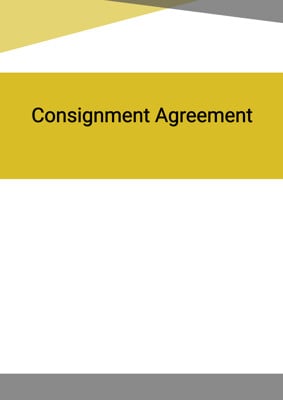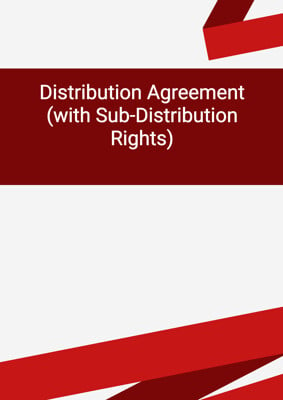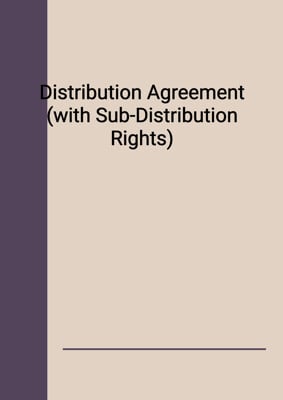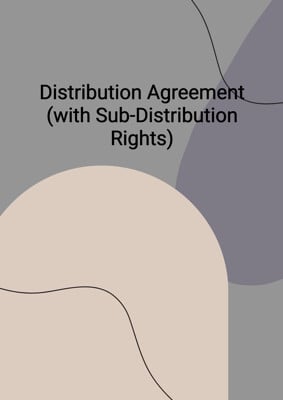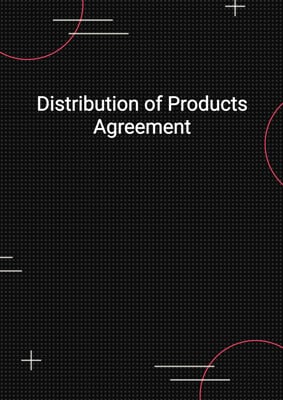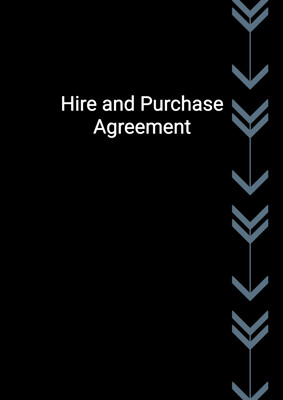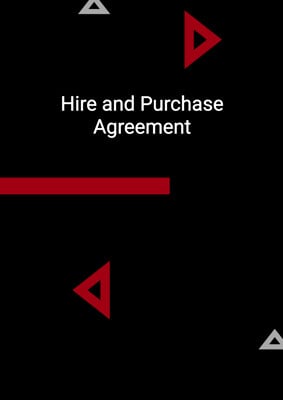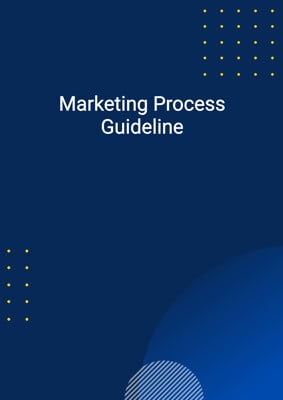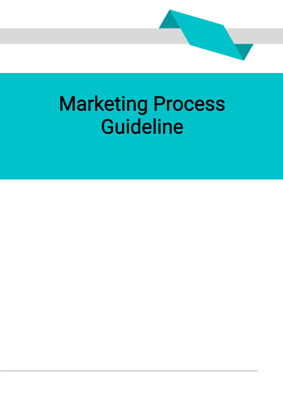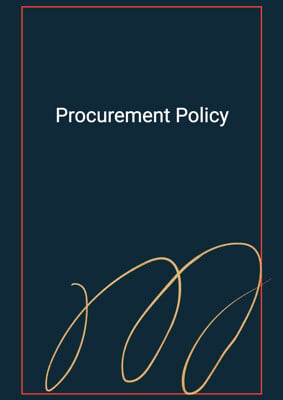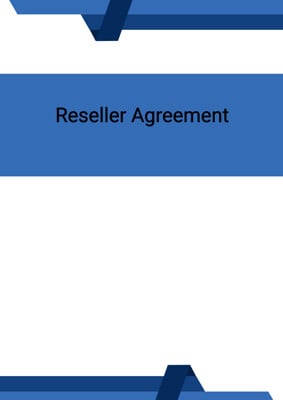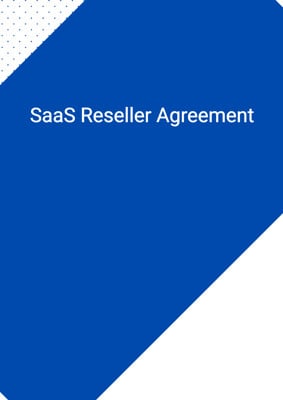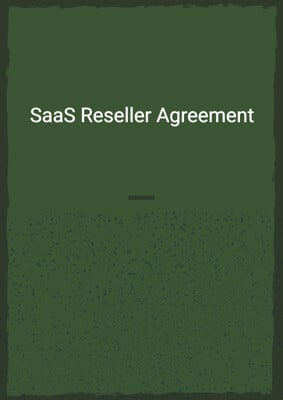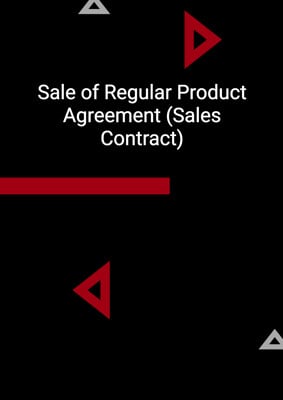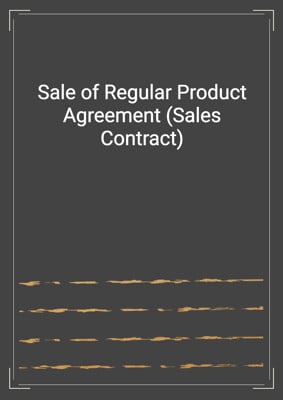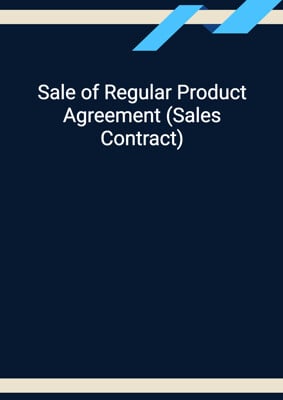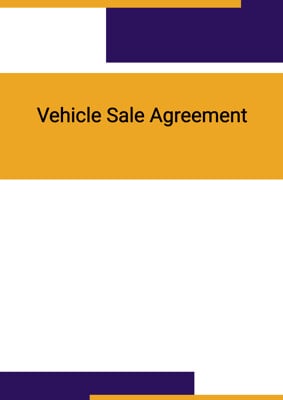How to Tailor the Document for Your Need?
01
Create Document
Fill in the details of the parties. You can click the "Fill with Member’s Information" button to complete it with information saved to your account.
02
Fill Information
Please fill in any additional information by following the step-by-step guide on the left hand side of the preview document and click the "Next" button.
03
Get Document
When you are done, click the "Get Document" button and you can download the document in Word or PDF format.
04
Review Document
Please get all parties to review the document carefully and make any final modifications to ensure that the details are correct before signing the document.
Document Preview
Document Description
The Vehicle Sale Agreement is an important document that outlines the terms and conditions of the sale of a vehicle between the Seller and the Buyer. It is crucial for both parties to have a clear understanding of their rights and obligations in order to avoid any potential disputes or misunderstandings.
The entire document begins with a title that clearly states its purpose, followed by a brief introduction that states the date and the parties involved in the agreement. The document then proceeds to provide a detailed scope of the agreement, which is the sale of the vehicle in accordance with the terms outlined in the agreement.
Each section of the document is carefully structured to address specific aspects of the sale. The General Obligations of the Seller section outlines the responsibilities of the Seller, including compliance with the terms and conditions of the agreement, delivery of the vehicle, and ensuring that the vehicle is fit for its purpose and meets the agreed specifications.
The Delivery section specifies the process and responsibilities related to the delivery of the vehicle. It includes details such as the delivery date, selection of a carrier, import licenses, and notification of any delays. It also addresses scenarios where the vehicle is ready for delivery sooner or later than expected.
The Test Drive section highlights the importance of a successful test drive before final acceptance of the vehicle. It emphasizes that the trial use of the vehicle does not constitute formal acceptance and does not reduce the Seller's responsibility under the performance warranty.
The Warranty section provides information about the warranty period for the vehicle and the Seller's obligations in case of defects. It also mentions the availability of additional warranty coverage, if applicable.
The Title and Risk section clarifies when the title to the vehicle is passed to the Buyer and the Seller's responsibility for insurance and encumbrances.
The Price and Payment section outlines the payment terms and the Seller's responsibility for customs duties and taxes. It also mentions the retention of a percentage of the contract price until the vehicle has been proven satisfactory.
The Delays and Force Majeure section addresses the consequences of delays in delivery and the impact of force majeure events on the performance of the agreement.
The Term and Termination section specifies the duration of the agreement and the conditions under which either party can terminate it. It also mentions the rights and remedies available in case of default or breach of the agreement.
The Amendments section states that any changes to the agreement must be made in writing and signed by both parties.
The Severability section ensures that if any provision of the agreement is deemed void or unenforceable, the remaining provisions will still be valid.
The Notices section provides guidelines for the communication of formal notices between the parties, including the methods of delivery and the addresses to which the notices should be sent.
The Settlement of Disputes section encourages the parties to resolve any disputes amicably before resorting to formal dispute resolution mechanisms.
The Dispute Resolution section mentions the jurisdiction clause and the possibility of executing the agreement in multiple counterparts.
The No Rights for Third Parties section clarifies that only the parties to the agreement have the right to enforce its terms.
Attachment A provides a description of the vehicle, including its chassis number, make and model, year, mileage, and registration mark.
Attachment B outlines the price and payment terms, including any adjustments and retention of funds by the Buyer. If applicable, Attachment C provides details of the warranty.
The agreement concludes with the signatures of the parties and the date of execution.
How to use this document?
To use the Vehicle Sale Agreement, follow these steps:
1. Provide information: Enter the Seller's and Buyer's information in the agreement, including their registered office addresses. This ensures that both parties are clearly identified.
2. Describe the vehicle: Attach a description of the vehicle, including its chassis number, make and model, year, mileage, and registration mark. This provides detailed information about the vehicle being sold.
3. Specify the scope of the agreement: Clearly state that the purpose of the agreement is the sale of the vehicle in accordance with the terms outlined in the agreement. This ensures that both parties understand the objective of the agreement.
4. Outline general obligations of the Seller: Specify the Seller's responsibilities, such as compliance with the agreement, delivery of the vehicle, and ensuring its fitness for purpose. This helps establish the Seller's obligations.
5. Address delivery details: Specify the delivery date and the process for selecting a carrier. Also, mention any import licenses required and the Seller's responsibility for customs and import duties. This ensures clarity regarding the delivery process.
6. Conduct a test drive: Emphasize the importance of a successful test drive before final acceptance of the vehicle. Clearly define the requirements, conditions, and procedure for the test drive. This helps ensure that the Buyer is satisfied with the vehicle's performance.
7. Provide warranty information: Specify the warranty period and the Seller's obligations in case of defects. If applicable, attach additional warranty coverage details. This helps protect the Buyer's interests.
8. Address title and risk: Clarify when the title to the vehicle is passed to the Buyer and the Seller's responsibility for insurance and encumbrances. This ensures a smooth transfer of ownership.
9. Specify price and payment terms: Clearly state the price to be paid by the Buyer and the payment schedule. Also, mention any adjustments or retention of funds by the Buyer. This ensures transparency in financial matters.
10. Address delays and force majeure: Specify the consequences of delays in delivery and the impact of force majeure events. This helps manage expectations and mitigate risks.
11. Define the term and termination: Specify the duration of the agreement and the conditions under which either party can terminate it. Also, mention the rights and remedies available in case of default or breach. This provides clarity regarding the agreement's duration and termination.
12. Handle amendments: State that any changes to the agreement must be made in writing and signed by both parties. This ensures that any modifications are properly documented.
13. Address dispute resolution: Encourage the parties to resolve any disputes amicably before resorting to formal dispute resolution mechanisms. This promotes a cooperative approach to conflict resolution.
14. Provide jurisdiction clause: Specify the jurisdiction for resolving disputes, ensuring that both parties understand the applicable laws and regulations.
15. Execute the agreement: Sign the agreement and include the date of execution. This signifies the parties' acceptance and commitment to the terms outlined in the agreement.
Remember, it is important to seek legal advice and tailor the agreement to the specific requirements of the vehicle sale transaction.
Not the right document?
Don’t worry, we have thousands of documents for you to choose from:
